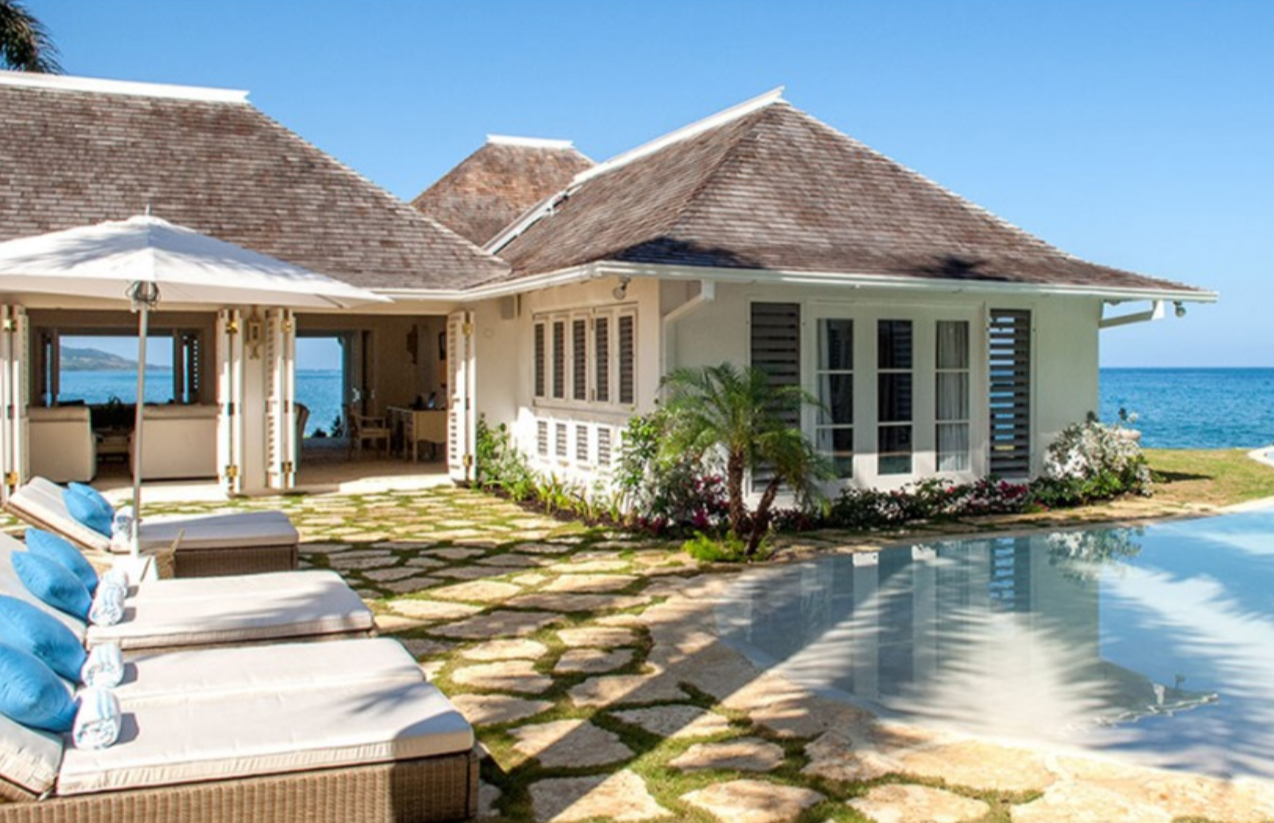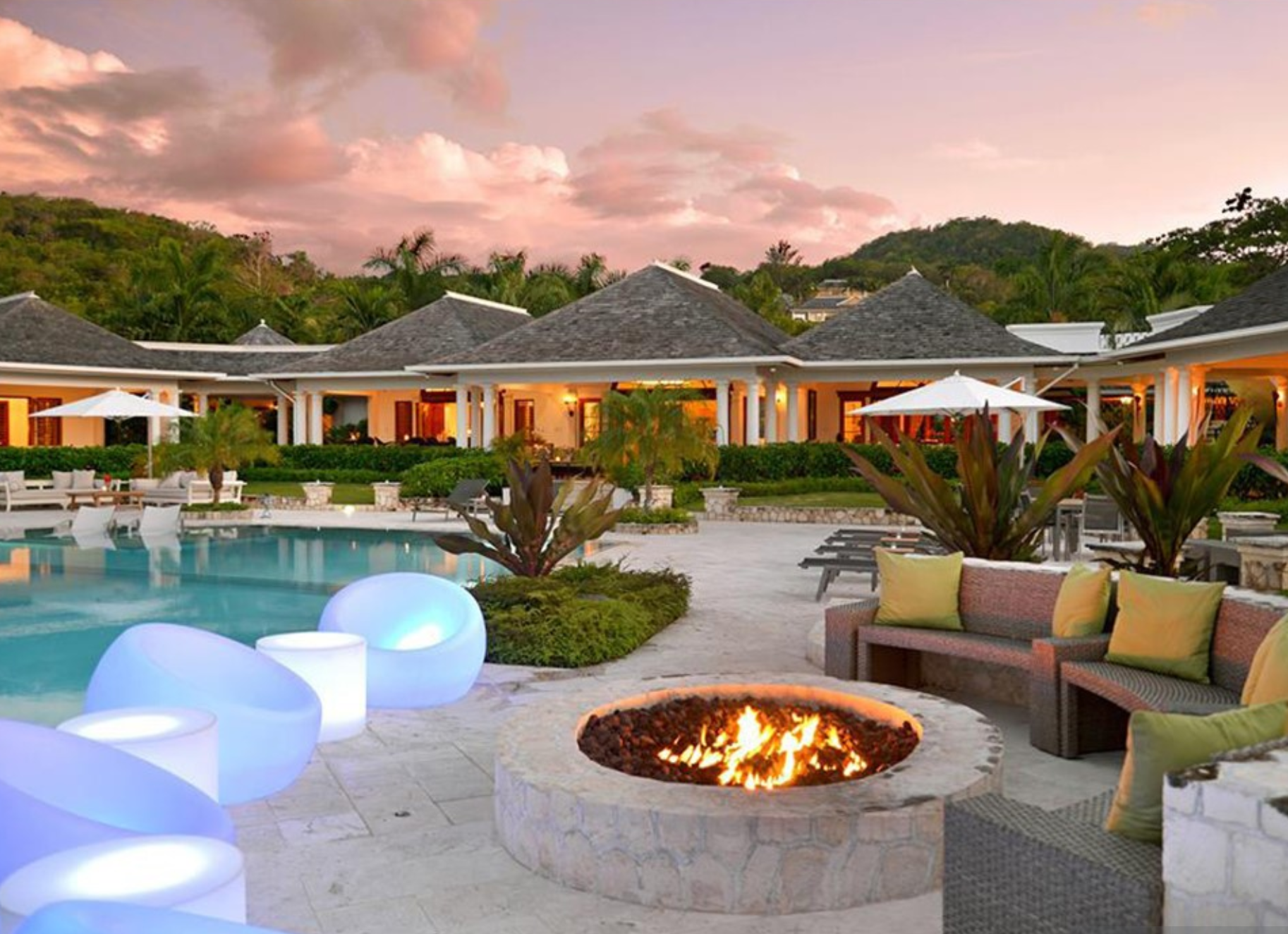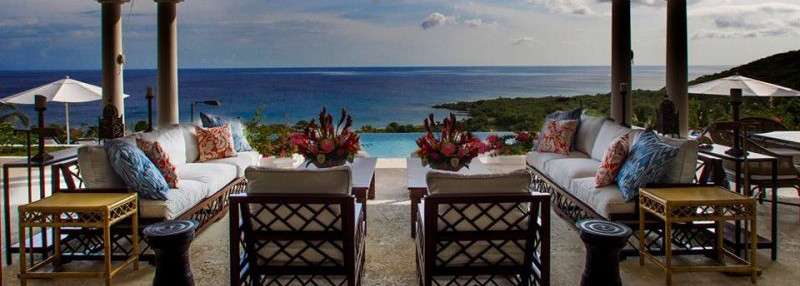The Tryall Club
Villas of distinction
Business View Caribbean interviews David Barber, Director of Sales at the Tryall Club as part of our focus on best practices – Caribbean business.
The Tryall Club, set amid 2,200 acres of lush landscape on Jamaica’s north shore, is a community of luxury, private villas that offer the Club’s occupants and guests luxurious accommodations, exquisite views, and world-class amenities.
 In addition to its magnificent, 18-hole golf course – nine of which border the deep blue Caribbean Sea – the Tryall Club is equally well-known for its exceptional tennis facilities, its private beach, its organic garden, its two restaurants, and the outstanding service provided by its dedicated, onsite staff.
In addition to its magnificent, 18-hole golf course – nine of which border the deep blue Caribbean Sea – the Tryall Club is equally well-known for its exceptional tennis facilities, its private beach, its organic garden, its two restaurants, and the outstanding service provided by its dedicated, onsite staff.
It’s no wonder that The Tryall Club was named as “One of the best places to stay in the whole world,” by Condé Nast Traveler.
Recently, Business View Magazine spoke with David Barber, Tryall Club’s Director of Sales, Marketing, and Communications. The following is an edited transcript of that conversation:
BVM: The Tryall Club has a pretty long and storied history. Can you tell us some of the highlights?
Barber: It is a remarkable part of Jamaica’s history and the entire property is officially recognized as being part of Jamaica’s National Heritage. The land, itself, was an Arawak Indian settlement and the Arawaks and the Tainos were the original inhabitants of much of the Caribbean before the arrival of the Spanish in the 15th century. Part of Tryall, mainly Barnes Hill, was an Arawak burial ground. We can actually trace the name Tryall to about 1680, as there are documents that exist, showing how many livestock were kept here and how many people were working on the estate.
“In fact, it does go back a little further than that, because when Oliver Cromwell seized Jamaica from the Spanish, he built a series of forts along the north coast of Jamaica, so as to repel the French and Spanish navies that kept trying to reclaim the island. The remains of the fort at Tryall are still standing, down by Flint River, which flows through the property.
“Over time, it existed, not so much as a plantation but as a mixed-use pen. So, it would have been livestock – primarily cattle, pigs, goats. But there was also some smaller scale cultivation of sugar. Most of our land is very hilly, so that’s not a perfect topography for sugar growing. But, it was a very successful for pimento and coconut. And still, today, you’ll find hundreds of pimento trees scattered about the property.
“It stayed pretty much that way until after the Second World War. At that time, the property was owned by William and Ida DeLisser. The DeLissers came to Jamaica in the 17th century and have remained here ever since then. In 1957, there was a group of businessmen staying at Round Hill, which is just down the road. They’d been over to Tryall to have afternoon tea at the Great House, and they decided to make an offer to buy the land, so as to create a private club. And that is really how Tryall began; the first villa was Little Hill, and that was completed in 1959.”
BVM: So, who owns the Club, today?
Barber: “The Club is owned by the 89 proprietary members. Those are the members who have invested by either buying a villa, or buying a lot with plans of building a villa. They are the voting membership and, collectively, they own the club. There are other tiers of membership, such as overseas member, golf member, non-resident member – and that entitles people access to the Club and a number of other privileges.
“The owners are multi-national; it’s mainly America, Canada, England, Switzerland, Italy, China, and Russia. The properties are all owned, outright. In terms of people who come here on holiday, it’s overwhelmingly North American. But not every owner rents; there are some owners who are residents, here, if not all of the year, for a good proportion of the year, and choose not to rent. Those that do are in a rental pool and they are available.”
BVM: What is the size of the Club’s staff?
Barber: “The Club has 220 employees, and each homeowner employs his or her own villa staff, so there are about 450 villa staff. They’re employed 365 days of the year and most of the villas have an occupancy rate of 50 percent. But, even if a villa is not occupied, because most of these are fairly large villas and they sit within an average of two to three acres with a garden, there’s always a lot of maintenance to do. Having a property in the tropics is different than having a property in a more northern climate.”
BVM: Speaking of property, are there any upcoming changes or renovations planned for the Club?
 Barber: “We’ve been working with a consultancy company for about a year and a half on a Master Plan that addresses the future of Tryall. The plan addresses three distinct areas: the beach, the Great House, and linking and connecting both of those to the infrastructure of the Club.
Barber: “We’ve been working with a consultancy company for about a year and a half on a Master Plan that addresses the future of Tryall. The plan addresses three distinct areas: the beach, the Great House, and linking and connecting both of those to the infrastructure of the Club.
“In a nutshell, the project for the beach would see us increase the depth of the beach; we can’t widen it because it’s a natural bay. We would add a swimming pool to the lawn, which is immediately behind the beach; we would construct a second pier opposite the existing 18th century pier, and we would raise the existing beach restaurant, rebuild it, but put it slightly further back, which would give us a direct oceanfront terrace. Currently, we have it slightly to the west, but by using the same location for the restaurant, and putting it further south, it gives us a deck to the north, directly over the water.
“The Great House component is slightly more complicated. In many ways, the Great House is lacking an identity, although it’s the hub of the Club. It was built in 1834. It wasn’t the original Great House; the original was further to the south and got destroyed in the 18th century by a hurricane. What we want to do with the Great House is take the building back to its 1834 shell. Over time, a lot of ad hoc additions were made to the structure for back-of-house purposes. So, we need to remove everything that is back- of-the-house and reconstruct it on land that we have to the east, bound by the Flint River. Now, by doing that, we would then be able to create a very attractive landscaped walkway from the tennis courts and the fitness center that will connect them with the pool of the Great House. And the Great House, itself, would become the venue for a small spa.
“We presented the Master Plan to the membership in November of last year, at the annual, general meeting, and the membership approved the vision. At the same time, we are producing architect drawings, together with costings, for the beach component of the plan, together with a percentage of the infrastructural work, primarily the relocating of facilities down to the Flint River. That will be presented to membership, this November, at which time they will take a vote. If they approve, it is our intention to implement that beach component during the construction season of 2018 – roughly mid-April to mid-December.
“At the same time, we’re working on a marine and coral conservancy program because over the decades, the stag horn coral has eroded all along the north shore of Jamaica. I remember coming to Jamaica in the 1970s and when you made the final approach to the airport in Montego Bay, it looked as though the ocean was glittering gold fairly close to the shoreline and that’s because stag horn coral, when it is very fertile and thriving, has a gold color. It’s our intention to get that back. So, we need to control the population of lion fish because they’ve done so much destruction, along with grouper and sea urchins. And one way we will encourage that is through guest interaction, because lion fish are extremely tasty to eat. So, we would take guests out and allow them to spear lion fish, which we’ll then use in our kitchen or they can be used in the villa kitchens.”
BVM: How do those villa kitchens operate for short-term guests? I understand each one has its own chef.
Barber: “There is an onsite commissary, which is like a small supermarket. So, each time a guest arrives at a villa, we open an account for them at the commissary and they will sit with the villa chef, or the villa head-of-house, and they’ll discuss what they would like to eat during the course of the week that they spend with us. And then, the chef will create a series of menus; more often than not, they will use the commissary to source the produce. But if, for example, the guest is particularly keen on having a primarily fish diet throughout their stay, each villa chef has a relationship with a local fisherman, so he or she will call that local fisherman and ask them to go out in the morning and catch, and then come up to the villa, so the guest can actually choose what fish they’d like to have either for lunch or dinner, that evening.”
BVM: In addition to taking great care of its guests, the Tryall Club is known for its wider philanthropic activities. Can you talk a bit about the Tryall Fund?
Barber: The Tryall Fund exists to provide care in the local community, primarily in our own Parish, Hanover, but also in the neighboring Parish of Westmoreland. It’s particularly focused on education. Children start school at the age of seven in Jamaica and in order to be admitted to school, they have to be literate. Hanover had an alarmingly high rate of illiteracy, particularly amongst children who were to start school, who were then denied that gift that should be within every child’s grasp. Through the Fund, a program was created, calls ‘Success by Six.’ It’s a program that teaches children from the age of three upward how to read using a phonics system. We’ve taken it to every single ‘basic’ school – these are the primary schools in Jamaica – in Hanover and quite a few in Westmoreland, so that when the child has reached the age of seven, they are fully literate and are able to start their formal education. So, we’ve raised the literacy rate among children to almost 90 percent. We also provide scholarships, every year for tertiary education as well as further education.
 “We have a fairly wide-reaching healthcare program. For example, this week, we have a dental mission at the Club; we bring dentists from America who are based both at the Club and within a church in nearby Hopewell, and they offer dental cleaning, fillings, and other dental treatment, all free of charge.
“We have a fairly wide-reaching healthcare program. For example, this week, we have a dental mission at the Club; we bring dentists from America who are based both at the Club and within a church in nearby Hopewell, and they offer dental cleaning, fillings, and other dental treatment, all free of charge.
“We also supply equipment for schools and care homes; we’ve even helped in the construction of schools. So, it’s a very visible part of who we are and what we do.”
BVM: Last question: If I’m looking to vacation in Jamaica, why should I choose to stay at the Tryall Club?
Barber: “One of the most compelling reasons to visit Tryall is the fact that it offers an experience that is not only authentically Jamaican, but inherently, Jamaican. First of all, there’s the landscape, much of which is undisturbed. And if you follow one of the hiking trails, which will take you way up into the south hills, you will see the forest environment that Columbus would have seen when he first set sight on Jamaica.
“We have around 35 species of non-fruit trees at Tryall, and well over 15 species of fruit tree, so it’s by no means your stereotype, Caribbean property comprised mainly of different types of palm trees. And a high proportion of the trees here have a significant heritage – some of the silk cotton trees are in excess of 250 years old. We also have eight, very rare, grey birch trees, which are about 70 years of age and of tremendous stature with wonderful canopies.
“You will also see over 60 species of birds – every single one endemic – together with all of the migratory birds that pass through Jamaica between April and November. We offer a very interesting bird-watching tour which sets out early in the morning. And that allows guests to learn to recognize a bird by its call – that’s the easiest way to do it.
“It’s also a place for people who love exercise. People who come to Tryall are very, very fit, and from five o’clock in the morning, you’ll see people out walking, you’ll see people out jogging. During the day, they’re playing tennis; they might be playing golf; they go on hikes; they go off property to explore more of the island.
“And Tryall is one of those rare properties that does transcend generations. For example, people who come here now, with their children, have come here as a child with their parents. And more often than not, they’ll bring their parents with them. So, it’s multi-generational. It’s an experience that creates memories and for many people, that’s what they seek when they travel. It’s not so much about commercial consuming, but more about collecting experiences as a family that they can share, afterwards.”
Check out this handpicked feature on The Caribbean Cement Company Jamaica.
AT A GLANCE
WHO: The Tryall Club
WHAT: A private community of luxury villas
WHERE: Near Montego Bay, Jamaica
WEBSITE: www.tryallclub.com





 This information will never be shared to third parties
This information will never be shared to third parties